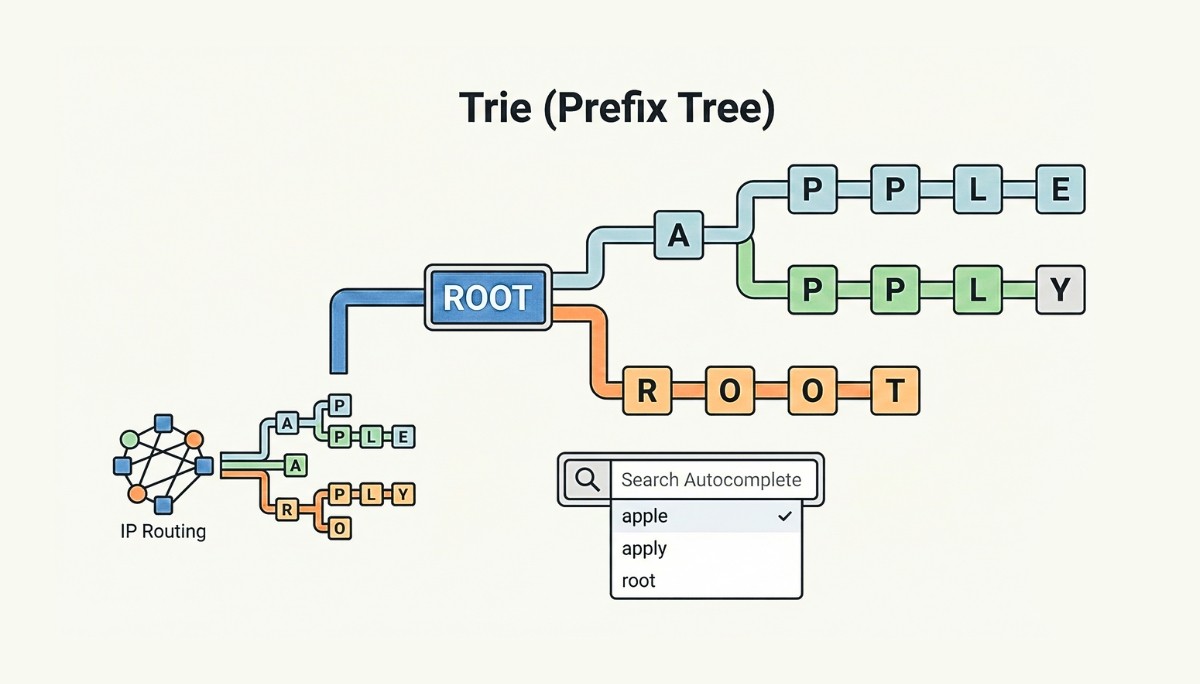Alphanumeric Characters Explained: What Alpha and Numeric Mean
By
Liz Fujiwara
•
Sep 18, 2025
Alphanumeric characters are a set of symbols that combine the 26 letters of the English alphabet, both uppercase and lowercase, with the 10 numerical digits from 0 to 9. Examples of alphanumeric sequences include combinations like ‘A1B2C3’ or ‘x9Y7z2’. These characters play a critical role in computing and digital communication, forming the foundation for creating usernames, programming variables, secure passwords, and unique identifiers. Their versatility allows for efficient encoding of information and helps maintain security, organization, and readability in various digital systems. Understanding and properly utilizing alphanumeric characters is essential for both software development and everyday technology use.
Key Takeaways
Alphanumeric characters combine letters and numbers, consisting of uppercase and lowercase letters from the English alphabet and the digits 0 to 9. They play a critical role in computing, data representation, and security.
Alphanumeric passwords enhance security by combining letters, numbers, and sometimes special characters, making them more resistant to unauthorized access. Guidelines such as password length and complexity further improve password strength.
The practical applications of alphanumeric characters extend from file naming conventions and programming languages to security systems, highlighting their essential role in digital communication and data management.
What Are Alphanumeric Characters?

Alphanumeric characters are defined as a combined set of letters and numbers. This set consists of all 26 letters of the English alphabet, from A to Z, and the 10 Arabic numerals, ranging from 0 to 9. A sequence like ‘A1B2C3’ is a simple example of alphanumeric characters in action.
These characters are fundamental in computing interactions and form the foundation of written language and programming. They serve as the building blocks for everything from usernames to complex coding structures. Without them, navigating the digital world as we know it would be impossible. Alphanumeric characters are indispensable in a variety of technological applications, including computing, string manipulation, and word processing.
The versatile nature of alphanumeric characters ensures they are widely used across numerous platforms and purposes. In essence, they are the glue that holds much of our digital communications and data systems together.
Components of Alphanumeric Characters

Alphanumeric characters encompass both uppercase and lowercase letters from the English alphabet, as well as the digits 0 through 9. We will explore their individual components: alphabetic characters, numeric characters, and special characters.
Alphabet Characters
The alphabetic component of alphanumeric characters includes both uppercase and lowercase letters. Uppercase letters range from A to Z, and lowercase letters range from a to z. These letters are essential for representing text in written language, computer code, and various digital formats.
Both uppercase and lowercase letters play a vital role in alphanumeric systems. They contribute to readable text and enhance password complexity and security, using only letters, including alpha characters.
Numeric Characters
Numeric characters are a fundamental component of alphanumeric sets, consisting of the digits 0 through 9. These characters are essential for forming diverse alphanumeric combinations, supporting a wide range of applications from simple data entry to complex programming tasks.
Special Characters
Special characters add further depth to the alphanumeric character set, increasing its versatility and functionality. Common examples of special characters include @, #, &, and !. These symbols are especially useful in programming and play a key role in enhancing the security of passwords.
Why Alphanumeric Characters Matter

Alphanumeric characters have a wide range of applications, from programming and data entry to security systems. Combinations of letters and numbers are crucial for various forms of data representation. Understanding their importance is essential for effective communication, security, and organization in the digital age.
Data Entry and Storage
File names that include alphanumeric characters help organize files by providing distinct identifiers related to their contents. This is particularly important for maintaining clarity and order, especially when handling large datasets. Using a consistent file naming convention ensures quick identification, particularly in collaborative settings.
However, the use of alphanumeric characters can vary across different languages, complicating data entry and system compatibility. This highlights the need for standardization and careful consideration when managing international data.
Programming Languages
Alphanumeric characters are essential in coding, as they form the basis for variable names and identifiers in programming languages. They enable clearer and more efficient programming by allowing developers to create readable code and define variable names that are easy to understand.
Special characters further enhance the functionality and expressiveness of alphanumeric sets in computing. They help structure code and convey specific meanings, making them indispensable across various programming languages.
Security Systems
Alphanumeric characters help create strong passwords by combining letters and numbers, making them more difficult to guess. This is essential for companies to protect important assets and sensitive data from unauthorized access. A recommended practice to further strengthen security is to implement two-factor authentication.
These characters are commonly used in online banking for secure account access and transaction verification. By incorporating alphanumeric characters, security systems can significantly enhance their defenses against unauthorized access.
Examples of Alphanumeric Character Uses

Alphanumeric characters are vital across various sectors, enabling secure systems and functional applications. They provide a versatile way to represent different types of information, making them essential in many fields.
Some specific examples include usernames and passwords, product codes, and file naming conventions.
Usernames and Passwords
Best practices for usernames and passwords include:
Using alphanumeric combinations to avoid common names and enhance security.
Incorporating special characters such as $, %, &, dashes, and parentheses in alphanumeric passwords to further strengthen them.
Recognizing that there are no universal rules for alphanumeric passwords, as requirements vary by company.
Product Codes and Identifiers
Many companies use alphanumeric codes to create unique product identifiers, enabling efficient tracking and inventory management. SKU numbers, which are alphanumeric, help retailers manage inventory effectively by assigning a distinct identifier to each product.
This practice improves accuracy and efficiency in supply chain operations.
File Naming Conventions
In data engineering, alphanumeric characters are essential for accurately naming files and organizing databases. Their use in file names enhances organization and makes digital files easier to retrieve, significantly improving data management efficiency.
Risks and Challenges with Alphanumeric Characters
Certain alphanumeric characters can be easily confused due to their similar shapes, such as I (uppercase i), l (lowercase L), and 1 (one). Passwords that rely solely on simple alphanumeric characters can be more vulnerable to attacks, as hackers often use automated tools to decode them. Additionally, passwords that are easy to read are harder to keep secure.
Readability and Security
Creating complex passwords is crucial because it increases the number of possible combinations, making them harder for hackers to crack. However, using only uppercase letters can reduce both readability and security. Avoid writing your password on a Post-It note or sharing it with others.
Aim to create passwords that are complex yet memorable to balance security with usability. This approach ensures that passwords remain strong while still being easy to use, reducing the risk of unauthorized access.
International Variations
International variations in alphanumeric characters can lead to significant discrepancies in data interpretation across countries. National characters may not be universally recognized by computing systems, causing compatibility issues. This complexity affects global commerce, data exchange, and cybersecurity.
Certain symbols unique to specific languages can disrupt the standardization of alphanumeric characters. Managing these variations requires a nuanced approach to ensure accurate data interpretation and system compatibility across international borders, particularly concerning language-specific symbols.
Alphanumeric Characters in Passwords

Alphanumeric characters enhance password complexity, making them more resistant to unauthorized access. By combining letters and numbers, alphanumeric passwords offer a higher level of security, increasing the number of possible combinations and making them more difficult for hackers to decipher.
Creating Strong Passwords
For enhanced security, consider the following recommendations for creating strong passwords:
Include at least one special character.
Use a mix of uppercase and lowercase letters.
Combine letters, numbers, and symbols to create a strong alphanumeric password.
Ensure the password length is generally between 12 and 16 characters, incorporating a mix of letters, numbers, and symbols.
Guidelines for creating secure alphanumeric passwords:
Should be randomized and avoid easily identifiable information like names or addresses.
Longer passwords that combine multiple words are generally more secure.
Such passwords remain easier for users to remember.
Balancing security with readability involves creating complex passwords that are still easy to recall, ensuring they are both strong and user-friendly. Examples of creative combinations include passwords like Gr@y&At0m.
Examples of Secure Passwords
Combining uppercase letters, lowercase letters, numbers, and special characters in passwords greatly enhances security. For example, D@7h!gPl87&Qq includes a mix of character types, making it highly secure. Another strong example is F9#jqKx2@bTz, which effectively uses alphanumeric and special characters.
Fonzi: Revolutionizing AI Engineering Hiring
Fonzi is revolutionizing the hiring process for AI engineers by combining automation with human interaction to enhance recruitment. This curated AI engineering talent marketplace connects companies to top-tier, pre-vetted AI engineers, streamlining the hiring process.
What is Fonzi?
Fonzi is a curated platform for AI engineering talent, providing organizations with access to a diverse pool of thoroughly vetted candidates. Its specialized marketplace ensures businesses can quickly and efficiently find the right AI engineers.
How Fonzi Works
Fonzi utilizes structured evaluations to confirm candidates meet specific skill requirements and implements fraud detection mechanisms to maintain talent integrity. Bias auditing processes promote fairness in candidate evaluations, enhancing the reliability and trustworthiness of the platform.
Why Choose Fonzi?
Fonzi offers several advantages for businesses hiring AI engineers:
Accelerates recruitment, helping companies scale AI teams effectively.
Ensures quality candidates without compromising speed.
Supports companies of all sizes, from early-stage startups to large enterprises.
Provides a consistent and scalable hiring experience while preserving a positive candidate experience.
Summary
Alphanumeric characters are the backbone of many digital interactions, playing a crucial role in everything from programming to creating secure passwords. Understanding these characters and their components, including alphabet characters, numeric characters, and special characters, enhances our ability to navigate and utilize digital systems effectively.
Their importance spans various applications, including data entry, programming, and security systems. By incorporating alphanumeric characters into our digital practices, we can improve organization, readability, and security. As we continue to rely more on digital systems, mastering the use of alphanumeric characters becomes increasingly vital.




